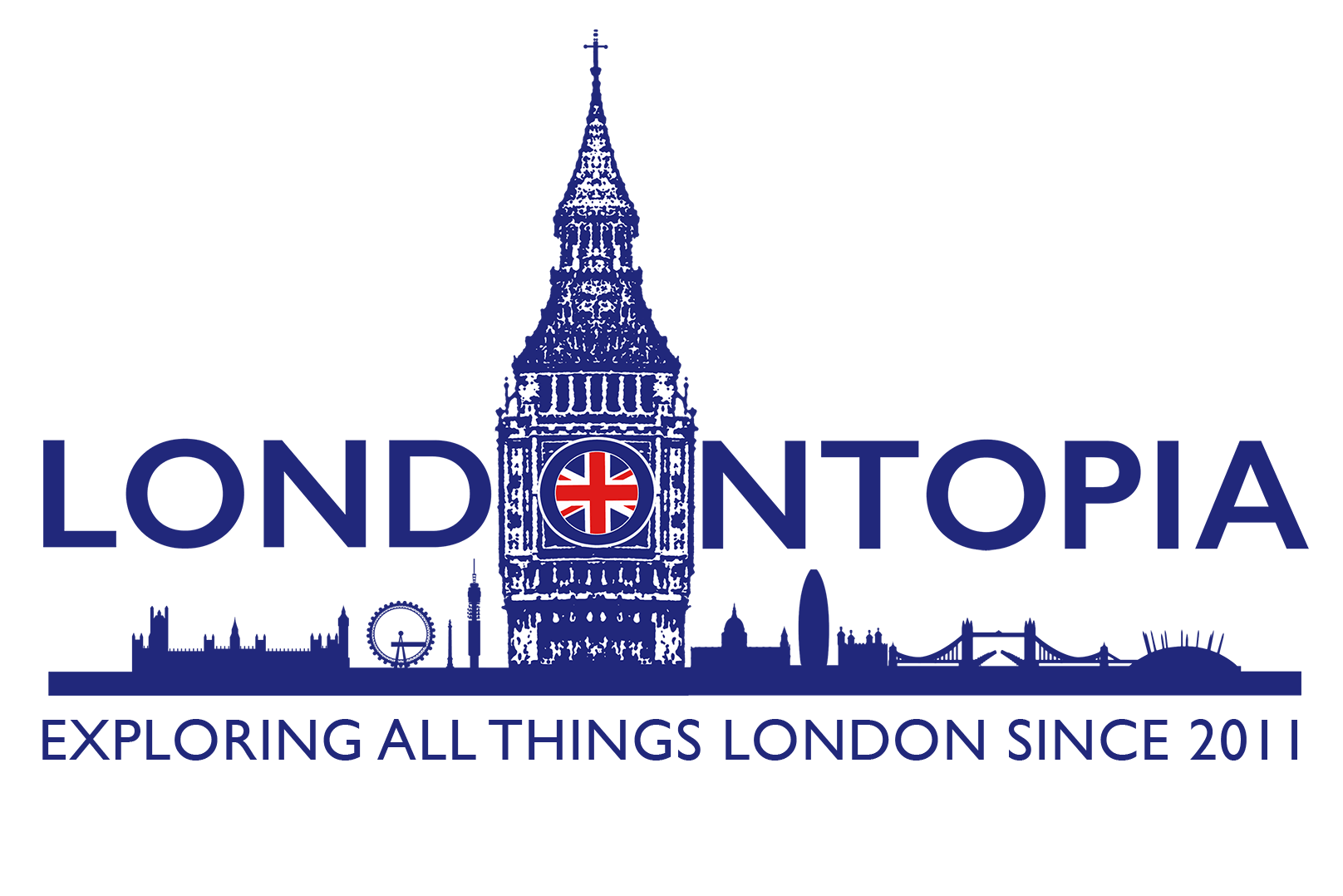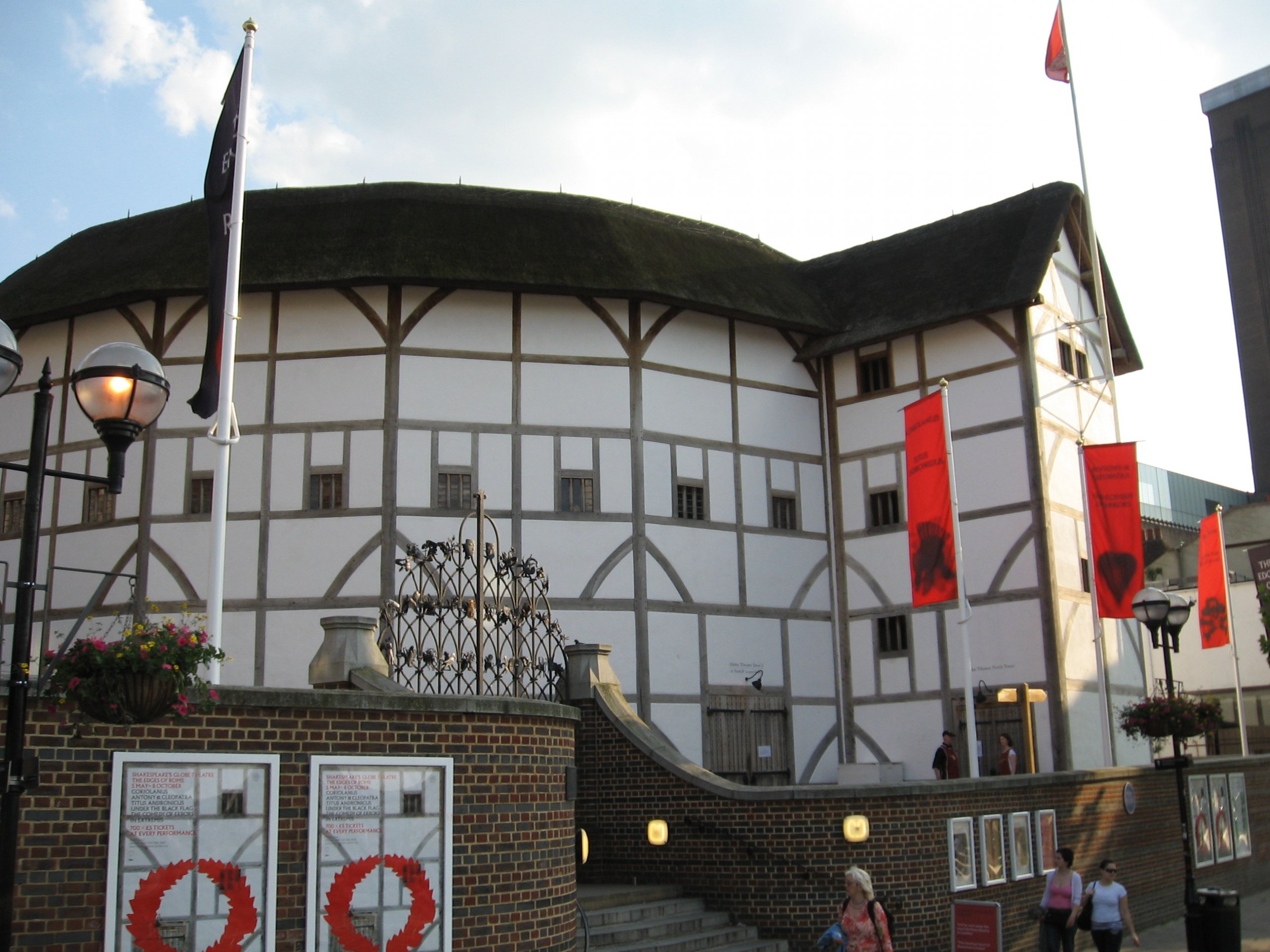It is perhaps the most famous stage in the world, the place where many of literature’s best-known plays were first presented. It was built for the Lord Chamberlain’s Men, William Shakespeare’s acting company, in 1599 and stood until destroyed by fire in 1613. Another was built the following year and remained until 1642, when it was closed by the Puritans and pulled down in 1644. But the third one stayed up! The newest incarnation of the Globe was built in 1997 to recreate the glory days of Shakespearean theatre and is still used today. So what interesting facts can we gleam from this eight-sided structure in all its manifestations?
Moving Theatre
The first and second Globes were built along Southwark. Theatre was actually banned in the City of London for religious reasons, so most theatres and acting companies set up shop on the other side of the River Thames where the city had no authority. The third Globe built in the 90s is approximately 750 feet from the location of the first two and was built based on academic approximations of the original.
Seating
The Globe had at least three levels of seating that were mostly reserved for the middle and upper classes. The stage level, known as “the pit” was most reserved for the working classes (also called “the groundlings”) and cost one penny to get in. The first gallery cost two pennies, the second three, and the third cost four pennies. You put the first in a box as you entered and each subsequent penny in a box at the stairs as you ascended. The boxes were then put into the “box office” once the play started, hence the term.
Apron
The part of the stage that thrusts out into the audience was referred to as the “apron stage”.
Do You Have a Flag?
Different coloured flags were used at the Globe to advertise what type of play the actors were performing that day. A red flag was used for history plays, a white flag was for comedies, and a black flag was for tragedies.
Deadly Makeup
It is fairly well-known that women were not permitted to perform in theatre during Shakespeare’s time, so many of the female roles were played by men. To get into character, many of them wore heavy amounts of makeup, which unfortunately also caused the early deaths for the actors due to the high lead content of said makeup. Presently, all the female roles at the Globe are played by women and the makeup is much healthier for the actors.
The Black Death
The bubonic plague was responsible for at least three closures of the Globe Theatre as a preventative measure to keep people from getting sick.
Only Open for the Summer
Due to the outdoor nature of the Globe, plays were only held in the warmer months as there was no heating. In fall and winter as temperatures cooled, Shakespeare’s plays were moved indoors to locations such as the Blackfriars Theatre.
Crowding
The Globe had a capacity for 1,500 attendees, but would often pack the house at around 3,000 people. Theatres were so popular that in 1591 (eight years before the Globe opened), a law was passed that the theatres would be closed on Thursdays so that the bull and bear-baiting industries would not be neglected.
Burning Down the House
The reason for the fire that destroyed the original Globe in 1613 was due to a special effects malfunction. A canon used for Henry VIII accidentally caused the thatched roof to catch fire. It reportedly took less than two hours to burn down completely.
Royalty
Not just for a cameo in Doctor Who, Queen Elizabeth I was a regular attendee at Shakespeare’s performances. Following her death in 1603, King James I became a patron of the company and they were redubbed “The King’s Men”. The play Macbeth is written in his honour as Banquo, Thane of Lochaber, was an ancestor of James.
To see what’s on at the Globe on your next trip to London, check out the website here.
A Little Bit of London In Your Inbox Weekly. Sign-up for our free weekly London newsletter. Sent every Friday with the latest news from London!





Jonathan, as an American , please do not forget to give HUGE credit to the American born actor and producer, Sam Wanamaker (father of Zoe ) who was the person who proposed and achieved the third rebuilding of the Globe in it’s present location. Google him and see how critical he was to that building being built .
Hear Hear!!
I love the articles you write for this website! Please note, however, that there is absolutely no evidence whatsoever that Queen Elizabeth I ever attended a performance at the Globe! While she did enjoy performances of Shakespeare’s plays,she viewed them in her own palaces. The productions were brought to her for private staging.
Azakly so!
The outdoor theatres were used year-round when possible, but only for daylight shows, not the torchlit productions you see on Doctor Who and the risible Anonymous.
While there is some great information on Shakespeare’s Globe here, I must point out that not all female roles are played by women in the modern Globe. Famously, Mark Rylance played Olivia in Twelfth Night in 2012, and I have seen male actors playing female characters in a number of fairly recent plays there. On the other hand, I also saw an all-female Much Ado About Nothing in 2004. It was fantastic.